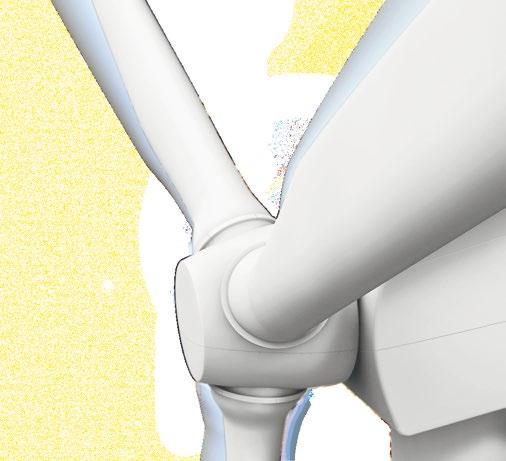
5 minute read
Research Data In Real Time: Short Measuring Intervals for Submersible Robots
Dr. Nicolas Nowald, Research Associate, MARUM Marine Technology Working Group Oliver Schultz, Application Engineer, Application Sales, Bender GmbH & Co. KG Dipl.-Ing. Benjamin Greiff, Industrial Solutions, Market Segment Manager Harbours & Vessels, Bender GmbH & Co. KG
ROVs are used in marine research for underwater exploration. The high-tech devices need to withstand immense pressures and perform their work reliably even at depths of several 1,000 metres. A stable power supply is therefore vital for success.
Advertisement
Since 2012, the MARUM Centre for Marine Environmental Sciences has been the University of Bremen's first and only faculty carrying out research. Around 400 staff work there to improve understanding of the key processes in marine environments. With its research areas Ocean and Climate, Geosphere-Biosphere Interactions and Seafloor Dynamics, its scientists are involved in national and international research projects. The basic research it conducts has enormous potential because the ocean floor accounts for 71% of the Earth's solid surface and is located at depths of up to 11,000 metres below sea level. To understand interactions taking place at the seafloor/ocean confluence and to quan tify their role in the Earth's geosystem, MARUM operates and develops a fleet of different submersible and measur ing systems which are deployed at sea by research ships.
BUNDLED TECHNOLOGY IN THE NAME OF RESEARCH: THE ROV MARUM-SQUID
The MARUM-SQUID is a powerful, lightweight work class ROV with a maximum diving depth of 2,000 metres. All ROV systems such as the SQUID are connected to a ship via a supply cable and controlled remotely and supplied with power from onboard. The ROV is made of a plastic frame in which all the components needed for diving are installed. To prevent the vehicle from sinking like a stone, the frame has a large buoyancy block made of thousands of tiny airfilled glass balls offsetting the vehicle's weight. These give the ROV neutral buoyancy in water enabling it to freely ma noeuvre underwater using its motors. The SQUID has three

Courtesy of Bender GmbH & Co. KG

cameras for acquiring scientific data, a sonar and two-line lasers for surveying objects on the seafloor. To acquire samples, there is a fully proportional manoeuvrable grip per with seven degrees of freedom. The ROV is equipped with sensor technology enabling the vehicle to be posi tioned above the seafloor with pinpoint accuracy as well as to manoeuvre it along specific routes. Powerful propulsion allows it to be operated in currents of up to three knots.

EXTENSIVE PLANNING FOR DEPLOYMENT AT SEA
Dr. Nicolas Nowald, a research associate in the MARUM marine technology working group, explains the make-up of a ROV team at MARUM: "Each team member must be able to pilot and monitor the ROV as well as perform their key skill, e.g. in electrics, hydraulics or IT. The ROV is operated by a pilot and co-pilot. The pilot "flies" the ROV while the co-pilot monitors all the systems and operates the manipulator. A third team member monitors the winch on deck and unwinds the supply cable during the dive".
IDEAL ONBOARD VOLTAGE
A transformer system supplies power to the ROV. The primary side is provided by the ship's system. On the secondary side, 3 kV is generated to keep the voltage loss in the supply cable low (3 x 4 mm² conductor + PE). To keep the transformer's size and weight to a minimum, frequency is increased beforehand to 800 Hz. A voltage filter levels out voltage peaks. Current is then fed through an electrical slip ring on the winch into the 2,200 m-long supply cable on the ROV with a diameter of 19 mm. The ROV's hydraulics and drive motors are supplied with DC 500 V and the cam eras, sensor technology and lighting with 24 V. The smaller the cross-section of the supply cable the lower the flow pressure underwater, the cable weight and, ultimately, the overall weight of the ROV system.
ROV insulation monitoring in the MARUM-SQUID was initially performed by a Bender type IRDH375 ISOMETER® insulation monitoring device and the AGH520S coupling device with measuring intervals of 6 to 12 seconds. However, it quickly became apparent during operations that the intervals were too long for the research applications. Bender was contacted to explore options for faster insulation fault detection. The original insulation monitoring device was therefore replaced by a type iso685W-S ISOMETER® with the FP200W display and control unit. With an on-site adapted profile, Bender technicians were able to reduce the interval to 3 seconds. Hedda Precht Dipl. Oceanographer, freelancer at the Bender company, added: "In operations, the new ISOMETER® gives MARUM researchers the major advantage of real-time moni toring via Ethernet in addition to shorter measurement times. Previously, insulation values could be read only from the IRDH375 installed into the 3 kV transformer system. This was impracticable during dives because the transformer is located far away from the ROV's actual control panels. Following re placement, insulation values can now be easily monitored by one of the navigation computers".
BENDER UK, LOW MILL BUSINESS PARK, CUMBRIA, UK Email: industrialsales@bender-uk.com, Website: www.bender-uk.com/solutions/oil-gas Tel: +44 (0)1229 480123
Join the global on & offshore event 22 – 25 September 2020


Key topics include: Power4Climate, Empowering People, Global Business
It’s time to put Climate First
The world’s leading wind energy event will bring policy, industry and research leaders together for an unmissable global gathering. Be part of it, and make the most of the learning, business and networking opportunities! We look forward to welcoming you!
windenergyhamburg.com
Co-organised by:
In co-operation with:
Co-organised by:
Global Partner:


WE20_AZ_210x147mm+3mm_ROV Planet Magazine.indd 1
Partners:

THE THINGS WE DO:









• Electronics Design & Manufacturing • Embedded Systems Design • FPGA (Intel/Altera) and Signal Processing • 3D Modelling and Mechanical Design • Through Hole /SMD PCB Soldering & Assembly • Rapid Prototyping & 3D Printing • Prototype to Volume Production • Electromechanical Assembly • Cable Forms & Harnesses









